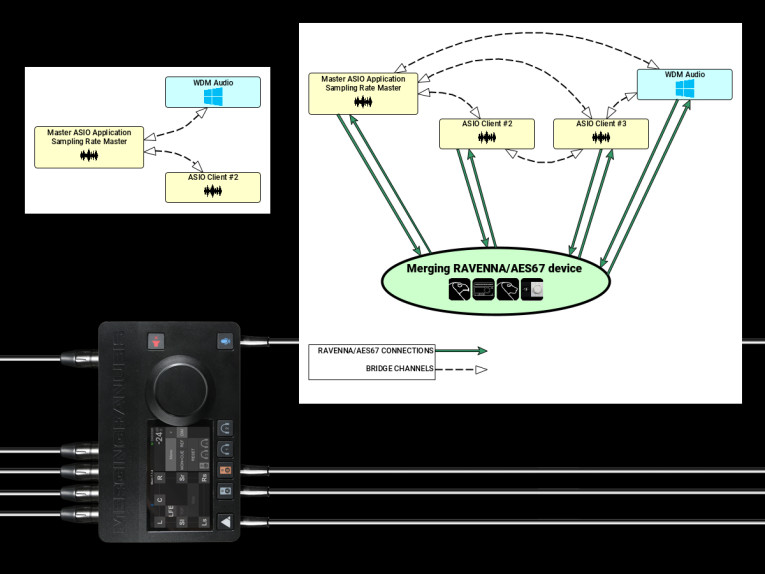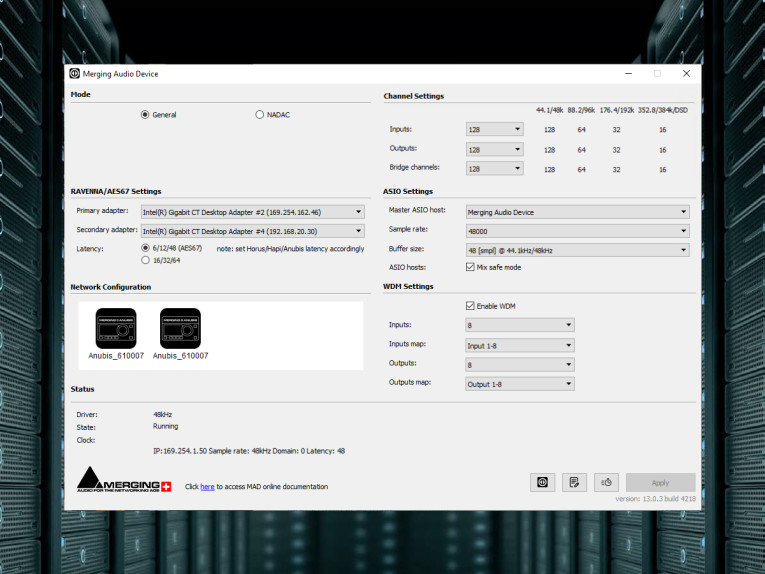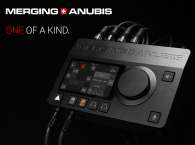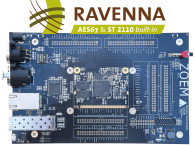
The Swiss manufacturer continues committed to developing product ranges with unrivaled quality and flexibility, expanding the possibilities in the increasingly networked media sector. By promoting and helping to develop Ravenna as a solution for real-time distribution of audio and other media content in IP-based network environments, Merging is also helping to expand adoption of standardized network protocols and technologies that respond to the strict requirements of the pro audio market featuring low latency, full signal transparency and high reliability. Beside offering full AES67 and ST2110 compatible solutions, Merging is the only company promoting Ravenna-based systems that are able to support high-channel audio count applications in DXD and DSD signals.
An entirely new MAD driver for Windows computers is now available from Merging and offers significant improvements to the free of charge version, introducing an additional Infrastructure package for organizations wanting the more advanced features.
The first of the major enhancements is a multi-ASIO capability that allows different applications to run simultaneously sharing ASIO inputs and outputs. Additionally, internal bridging allows channels to be defined to send audio between applications concurrently using MAD.
ASIO is the most popular driver option for the recording industry but there are other markets where the official Microsoft WDM (Windows Driver Model) is essential and this is now incorporated into MAD. This addition makes Merging's ANUBIS network audio interface a much more versatile solution for monitoring, recording, mastering, gaming or Esports. The combination of ASIO and WDM gives enormous flexibility by allowing WDM channels to be sent or mixed to the same outputs as ASIO or redirected to the bridge channels. This permits these channels to be routed or recorded by the ASIO applications as well as allowing the user to monitor the WDM sources independently to those on the DAW or Mix. The implications are huge because this enables the user to listen to his favorite DAW whilst comparing his track with playback from applications like Spotify or YouTube.
Recent developments in IP standards for the broadcast and media industry require a number of additional features to address stream redundancy and the migration towards centralized data centers. The Merging Audio Driver Infrastructure option not only offers ST2022-7 Seamless Protection Switching, it also adds NMOS IS-04 and IS-05 compliance to the package, plus it brings in the option of Virtual Machine operation.
Today’s broadcasters are leveraging the incredible flexibility and ROI maximization that centralized production machines can bring. An editing machine in the data center can be allocated to any remote location worldwide, making sure a news picture editing suite (for example) is shared as much as possible and generates revenue 24/7. MAD connects the machine in ST2022-7 and allows the computer to be discovered and controlled by an NMOS solution, regardless of whether the machines available in the data center are physical or virtual. For that application, the new Anubis SPS interface provides an ultra-reliable high-quality audio end point in the editing room which can be configured remotely and provides accurate monitoring calibration (EQ/DLY/TRIM) to the end user, as well as recording facilities thanks to the built-in mic preamps and A/D D/A conversion.

Delving a bit deeper into the capabilities of MAD, it is possible to have the ASIO and WDM applications at different sample rates as the WDM has its own Sampling Rate Converter which will automatically convert to the ASIO rate. This allows a recording to be compiled on the ASIO side with some files coming from a WDM source with a higher or lower rate.
Additionally, Merging believes that the introduction of MAD gives existing Pyramix and Ovation Native users a radically enhanced set of workflows for no extra cost and that the addition of the low-cost Infrastructure option offers extremely cost-effective, controllable solutions to both the start and end points of any centralized IP network. The opening to data centers and server-based installations with VM support, the enhanced security provided by ST2022-7 and the additional discovery and control possibilities created by the inclusion of NMOS, reinforce Merging Technologies' position as a key solution provider for the broadcast and installation industries.
www.merging.com






